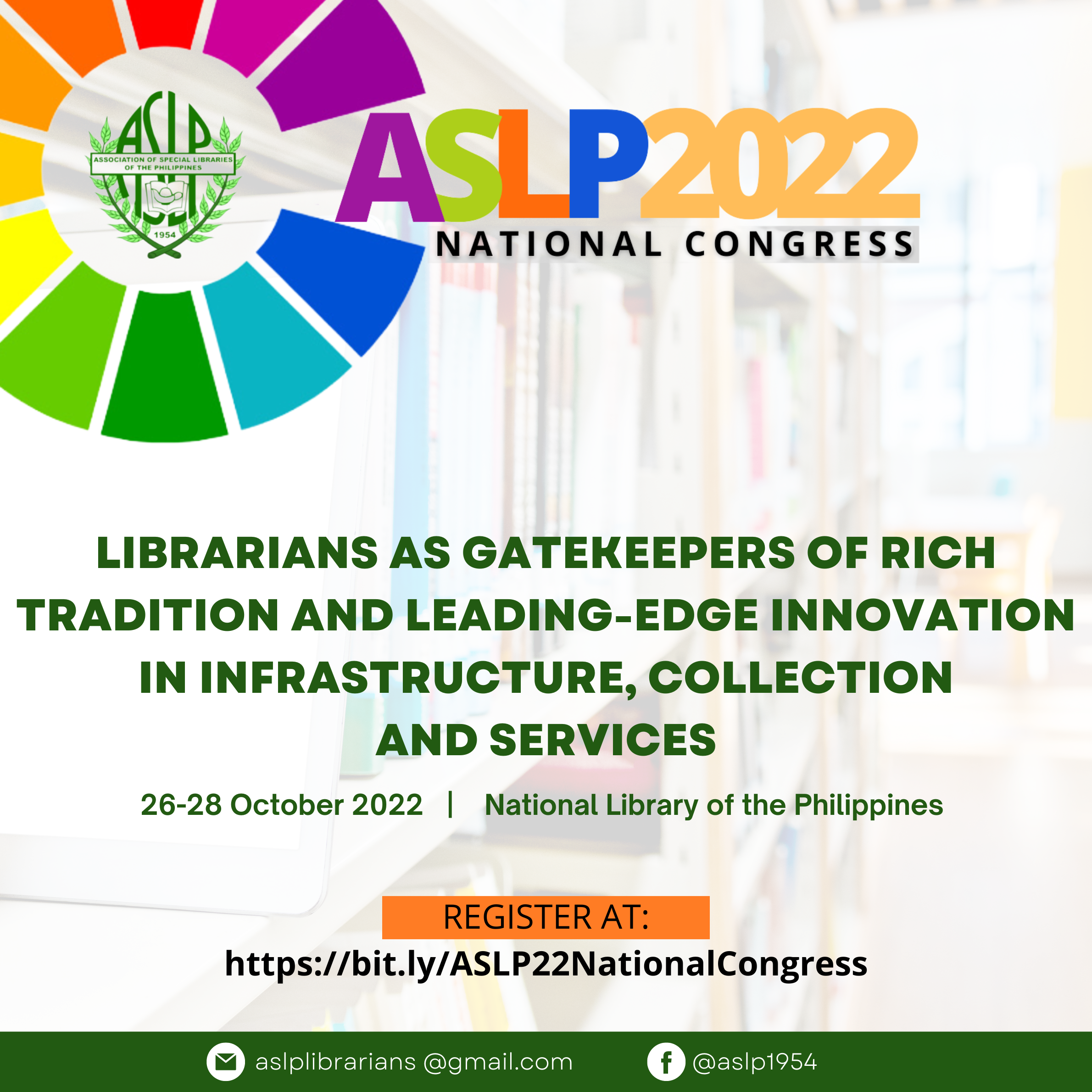9th ASLP National Congress: Librarians as Gatekeepers of Rich Traditions and Leading-Edge Innovation in Infrastructure, Collection and Services
Association of Special Libraries of the Philippines (ASLP)
PROGRAM DESCRIPTION
In the onset of Fifth Industrial Revolution, libraries are once again posed with another fundamental change. It happened in the turn of the new millennium when Internet started affecting every fiber of people’s lives—from mundane tasks such as communicating to game changing innovations. At that time, many pundits are predicting the demise of libraries as leading web browsers such as Yahoo and Google can ably perform librarian’s job and store as many resources just like a typical library. The prediction did not materialize. Librarians and libraries managed these changes and even made technological advancements partners in making library services better, collections responsive and infrastructures cost-efficient.
Several years after, librarians must face novel challenges brought about by upgrades of technologies, the rise of Millennials as users and library personnel, escalating cost of library resources, the usual cuts of government funding and pedagogical innovations. In this backdrop, libraries are called to reinvent. As to whether they will become victors again remains to be seen. A study conducted by Watstein and Mitchell (2006) tried to answer this using four (4) seminal and forward-looking works discussing the matter. The overwhelming verdict is YES if they learn to harness the technologies that the current users preferred; if they maintain proactive instance that constructively deal with the problems instead of resisting changes in their midst and reinvent the traditional way of doing librarianship taking into consideration the environment and content that information consumers want and use.
For the library to remain relevant given these forthcoming trends has several options. It must manage the change and invent a future where it is still has something to offer in the community—provide its users collection of materials that is attuned with what is demanded and needed; introduce cutting edge services that highlight the competitive advantage of librarians; harness the available technological platforms to its benefit; and lastly, build infrastructures that position the libraries as convenient, reliable and authoritative information source.
OBJECTIVES
The congress aims to: <br/>(1) to talk over the rich traditions of libraries vis-à-vis the continuous development of technologies in library setting;<br/>(2) to discuss the competencies and skills needed in response to disruptive innovation particularly in the areas of collection development, service provision and infrastructures of libraries;<br/>(3) to suggest novel and forward-looking concepts that ensure continued relevance and reinvention of libraries and information centers;<br/>(4) to apprise the librarians and information professionals of the posed challenges in the future; and<br/>(5) to provide an avenue where policy recommendations in dealing with these inevitable changes may be constructively discussed.<br/>
ABOUT

GENERAL INFORMATION
OTHER INFORMATION
9th ASLP National Congress: Librarians as Gatekeepers of Rich Traditions and Leading-Edge Innovation in Infrastructure, Collection and Services
Librarians
Conference
OTHER INFORMATION
LIB-2017-028-096
₱ 4000 registration fee
60 target no. of participants
24 hours

